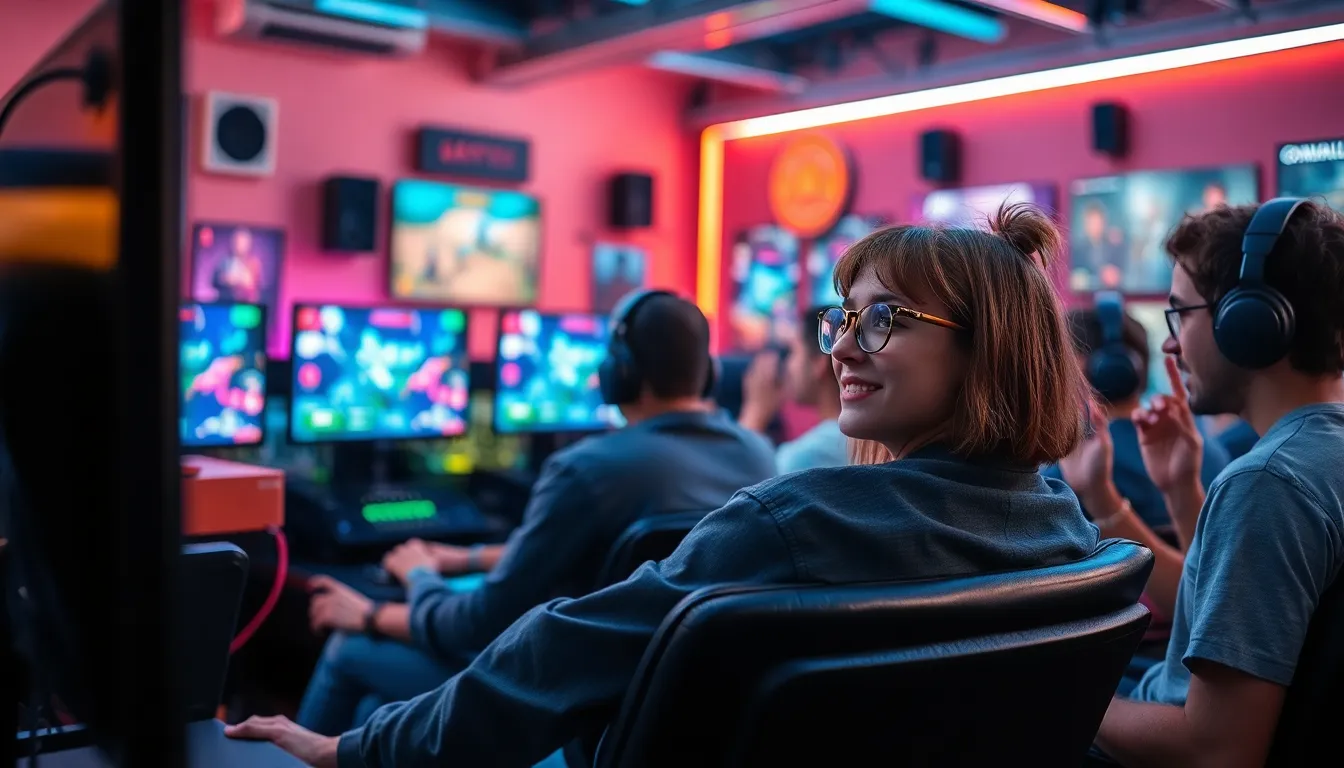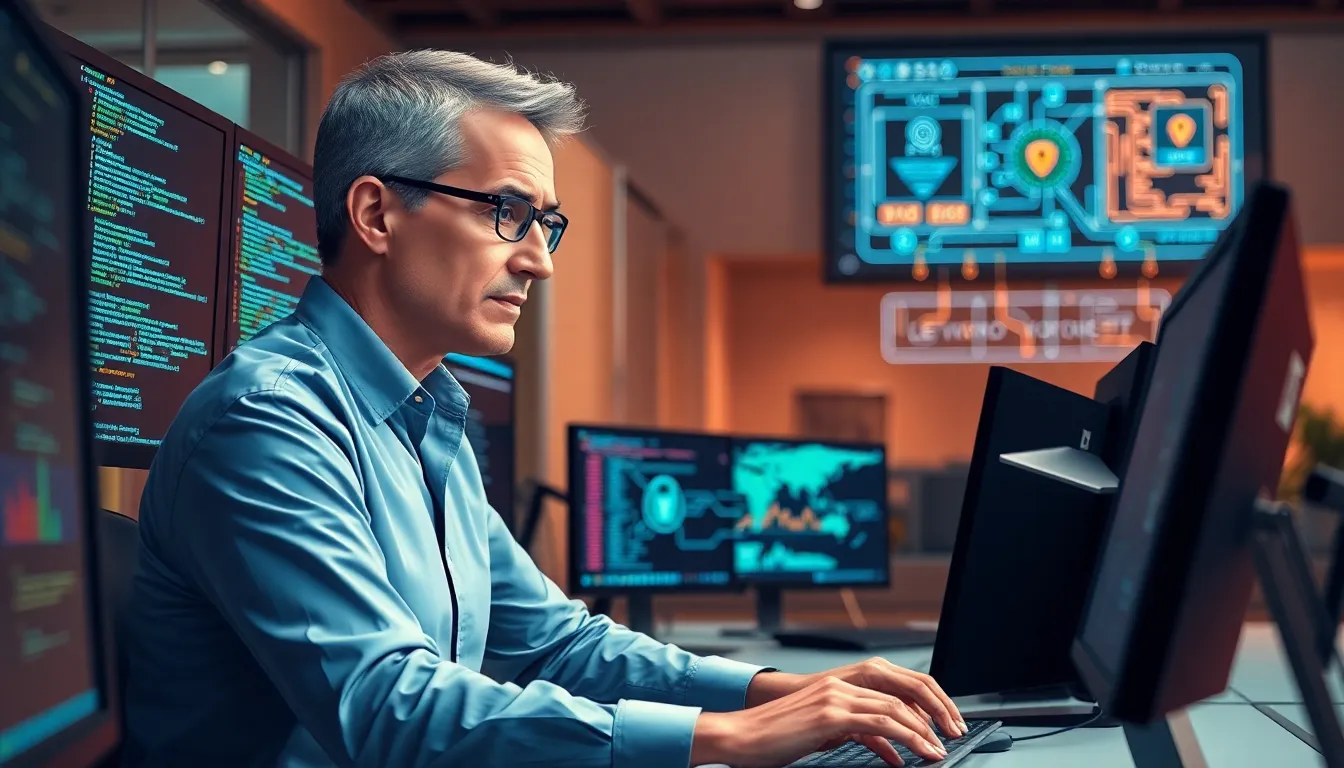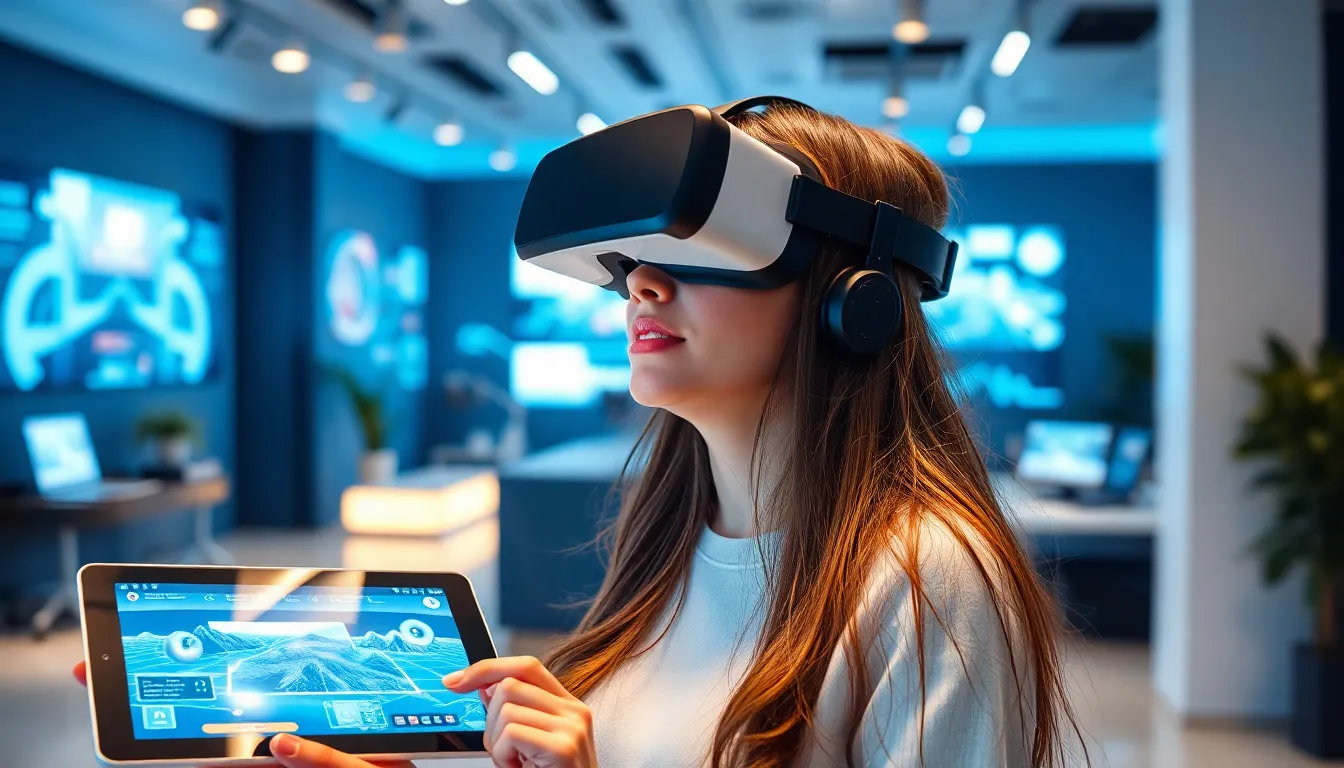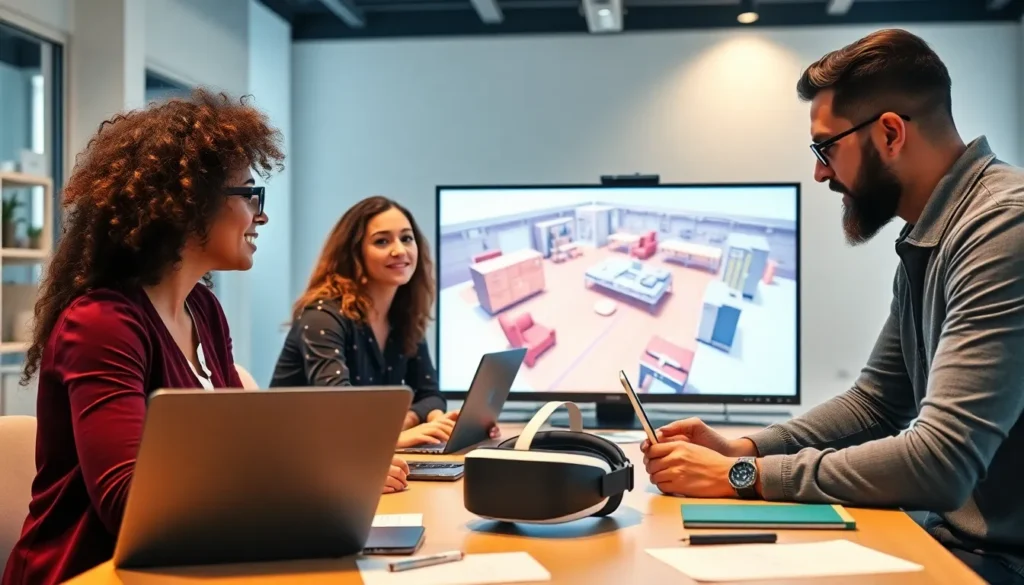Table of Contents
ToggleIn a world where reality sometimes feels a bit too ordinary, augmented and virtual reality development services are shaking things up like a double shot of espresso. Imagine stepping into a digital playground where the impossible becomes possible, and your wildest ideas leap off the screen. Whether it’s transforming a mundane training session into an exhilarating adventure or creating immersive experiences that leave users gasping in awe, AR and VR are the dynamic duo that businesses never knew they needed.
Overview of AR VR Development Services
AR and VR development services offer innovative solutions that enhance various sectors, including education, healthcare, and entertainment. Businesses utilize these technologies to create interactive training modules that improve skill retention and engagement among users. Immersive experiences generated by AR and VR foster deeper understanding and more effective learning outcomes.
Many industries benefit from AR and VR applications. Retailers enhance customer experiences by integrating virtual showrooms and augmented product displays, allowing customers to visualize products in their environments before purchasing. In healthcare, these technologies enable realistic simulations for both patient treatment and medical training.
AR and VR development services focus on crafting tailored solutions. Developers analyze specific business needs to create customized experiences that align with organizational goals. Technologies employed in these services encompass a variety of platforms, such as mobile apps, head-mounted displays, and web-based applications.
By leveraging AR and VR, businesses gain competitive advantages. These technologies create opportunities for improved marketing strategies, driving engagement and brand loyalty. Enhanced interactivity leads to increased customer satisfaction, often translating into higher conversion rates.
AR and VR services also include ongoing support and updates. Developers provide maintenance services to ensure applications remain current with emerging technology trends. Regular enhancements keep the user experience fresh and relevant, maintaining interest and engagement over time.
Key Technologies in AR VR Development
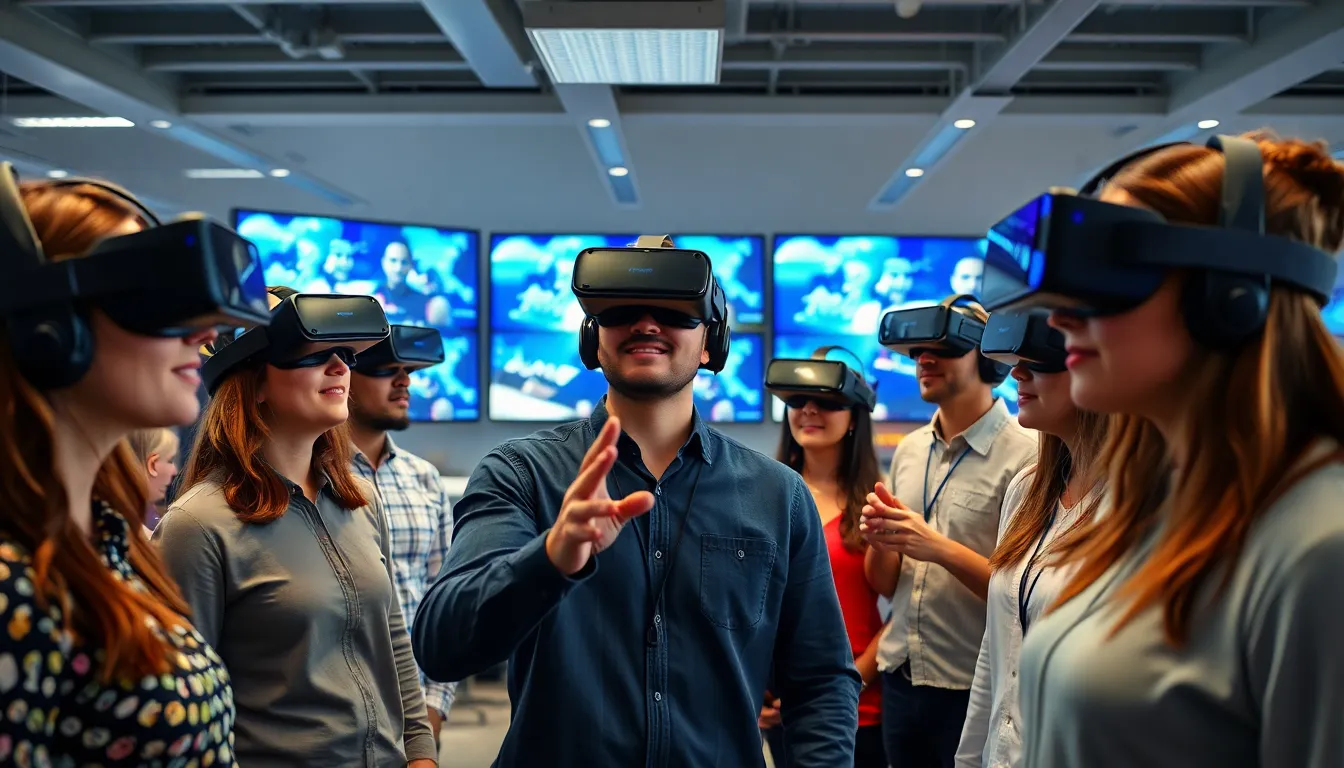
AR and VR development services rely on several technologies that enhance user experiences and interaction. Each technology plays a crucial role in delivering immersive and engaging applications.
Augmented Reality Technologies
Augmented reality technologies utilize computer vision, simultaneous localization and mapping, and depth tracking. Computer vision enables devices to recognize and interpret real-world objects, while localization and mapping help create an accurate representation of the environment. Depth tracking ensures digital content overlays appear naturally within physical spaces. Software development kits like ARKit and ARCore provide tools for developers to create seamless AR experiences across various platforms. Additionally, smartphone applications utilize simple interface elements to engage users effectively.
Virtual Reality Technologies
Virtual reality technologies incorporate head-mounted displays, motion tracking sensors, and haptic feedback systems. Head-mounted displays offer immersive visual experiences by presenting 3D environments. Motion tracking sensors pick up user movements, facilitating interactive participation within virtual worlds. Haptic feedback systems enhance realism by providing tactile sensations as users interact with digital objects. Game engines like Unity and Unreal Engine support VR content creation, providing advanced graphics and physics capabilities. Furthermore, wireless systems improve mobility and comfort, enabling users to explore virtual spaces freely.
Benefits of AR VR Development Services
AR and VR development services bring significant advantages to businesses, enhancing user interactions and transforming experiences.
Enhanced User Experience
These technologies create immersive environments that elevate user experiences. AR overlays digital information onto the real world, allowing users to interact with their surroundings more meaningfully. For instance, a shopper can visualize how furniture looks in their home before making a purchase. VR transports users into entirely new worlds, providing unparalleled engagement. Developers focus on usability and accessibility, ensuring diverse users can navigate these environments effortlessly. Improved visual quality and realistic simulations contribute to user satisfaction, enhancing loyalty to brands and services. Companies that prioritize user experience see higher retention rates and increased customer satisfaction.
Increased Engagement
AR and VR significantly boost user engagement across sectors. Interactive simulations hold users’ attention far better than traditional formats. Hands-on experiences within training programs foster deeper learning, enhancing knowledge retention. Retailers utilizing AR for virtual try-ons see increased interaction duration and conversion rates. Health care providers benefit from VR, allowing professionals to practice procedures in a risk-free environment. Engaged users are more likely to share their experiences, creating organic marketing opportunities. Businesses that embrace these technologies leverage this increased engagement to drive brand awareness and loyalty.
Applications of AR VR Development Services
AR and VR development services find applications across diverse sectors, enhancing user experiences and engagement.
Gaming and Entertainment
Gaming and entertainment leverage AR and VR to create immersive experiences. Players interact with virtual environments, elevating gameplay through realism. Notably, titles like “Pokémon GO” and VR games like “Beat Saber” demonstrate the power of these technologies in engaging audiences. Enhanced graphics and interactivity keep users captivated, driving both casual and competitive gameplay. Additionally, interactive storytelling in VR enables deeper narrative connections, transforming conventional media consumption.
Education and Training
Education and training benefit significantly from AR and VR integration. These technologies facilitate interactive classrooms, empowering students with engaging learning experiences. Effective training programs utilize virtual simulations for skill development, allowing learners to practice in controlled environments. Institutions adopt AR tools for enhanced visualization of complex subjects, improving understanding. By immersing students in realistic scenarios, educational outcomes improve, making learning both effective and enjoyable.
Healthcare
Healthcare applications utilize AR and VR for various purposes. Medical training programs enable students and professionals to practice surgeries and procedures in simulated environments, enhancing their skills before real-life applications. AR enhances surgical precision by overlaying critical information during operations. Patient therapies also benefit from VR, with environments designed to treat phobias or assist in pain management. These advancements lead to better patient outcomes and more efficient training processes.
Retail and E-Commerce
Retail and e-commerce sectors adopt AR and VR to improve shopping experiences. Virtual showrooms allow customers to visualize products in their environments, increasing confidence before purchasing. Enhanced product visualization in AR reduces return rates and boosts consumer satisfaction. Additionally, interactive applications can gamify the shopping experience, attracting more customers. Brands leverage these technologies for immersive marketing campaigns, creating memorable interactions that drive sales and enhance brand loyalty.
Challenges in AR VR Development
AR and VR development faces several challenges that can hinder progress and limit user experiences.
Technical Limitations
Technical limitations often pose significant hurdles in AR and VR development. Device compatibility issues may arise, as not all smartphones and headsets support advanced features. Latency can affect user experiences, leading to motion sickness or disorientation. Additionally, hardware constraints frequently restrict developers from optimizing applications to their full potential. Limited processing power in mobile devices may prevent seamless graphics rendering. Furthermore, high-quality visuals demand substantial memory and storage, often exceeding available capabilities.
User Adoption and Experience
User adoption represents another challenge in AR and VR development. Many potential users may find the technology intimidating or unfamiliar, which discourages engagement. Its adoption can also vary based on demographics, with some groups embracing these innovations more than others. Moreover, usability issues frequently arise, as intuitive navigation and interface design are essential for maintaining user interest. Concerns regarding user privacy and data security can further complicate acceptance. A wide range of experiences exists, influencing overall satisfaction. Engaging content is crucial in attracting and retaining users, contributing to the long-term success of AR and VR applications.
AR and VR development services are revolutionizing how businesses engage with their audiences. By transforming traditional interactions into immersive experiences, these technologies offer unparalleled opportunities across various sectors. Whether enhancing training in education or creating captivating retail environments, AR and VR are paving the way for innovative solutions that drive customer loyalty and engagement.
As the landscape of technology continues to evolve, businesses that embrace AR and VR will remain at the forefront of their industries. With tailored solutions and ongoing support, companies can ensure their applications stay relevant and effective. The future of user interaction is bright, and those who harness the power of AR and VR will undoubtedly reap the rewards.

